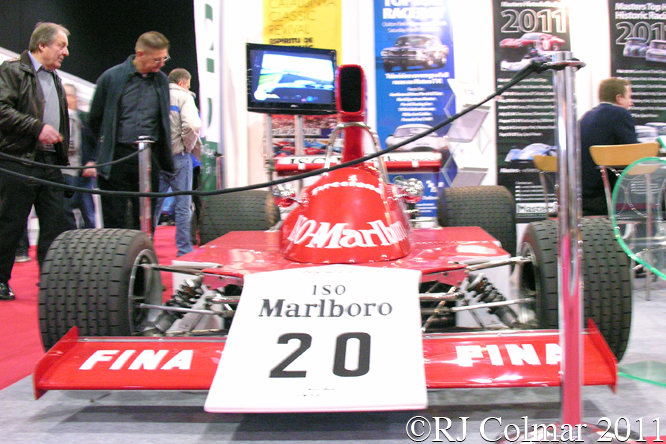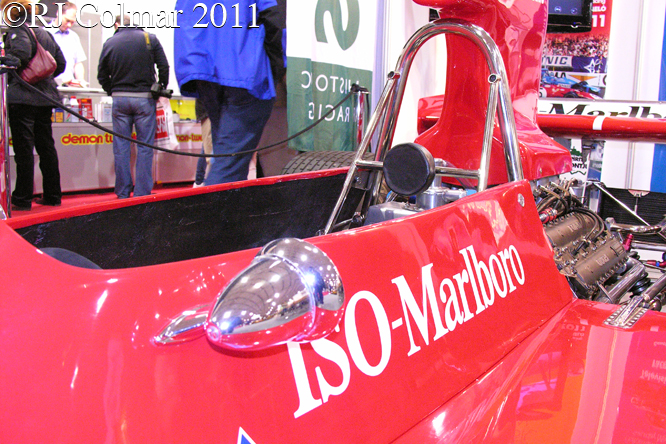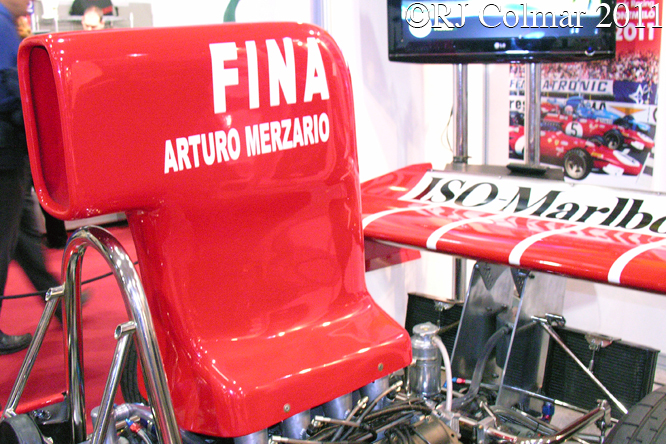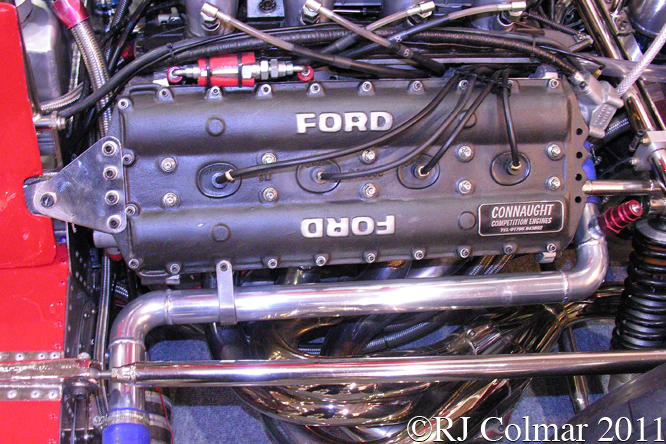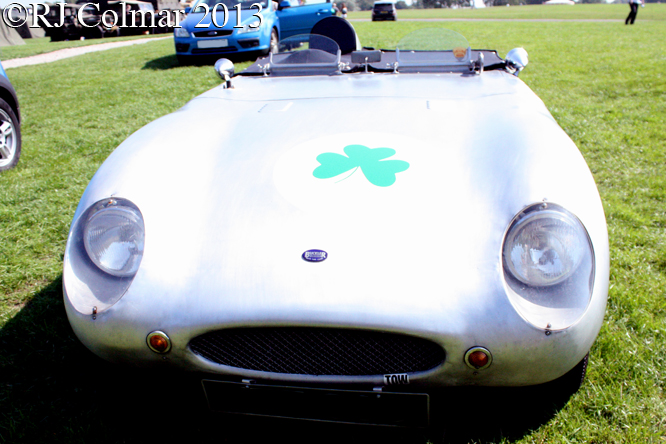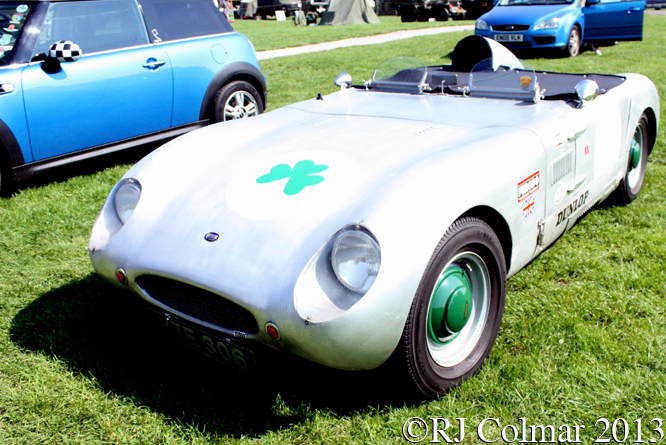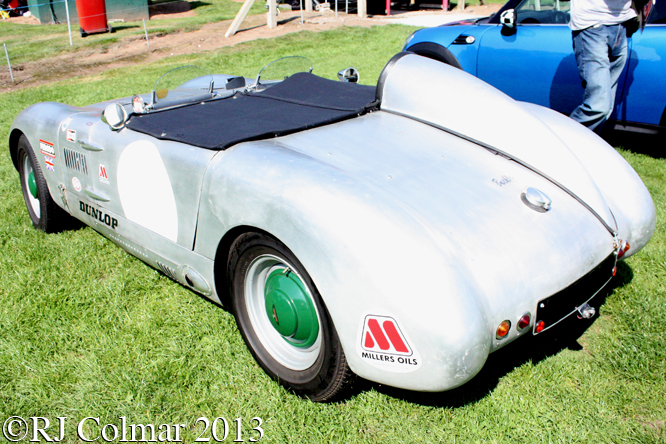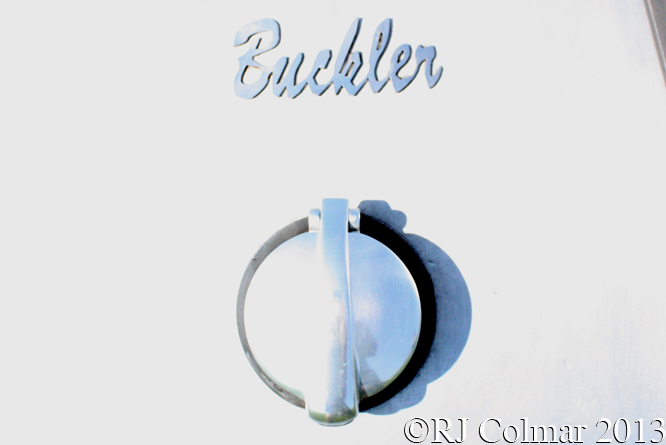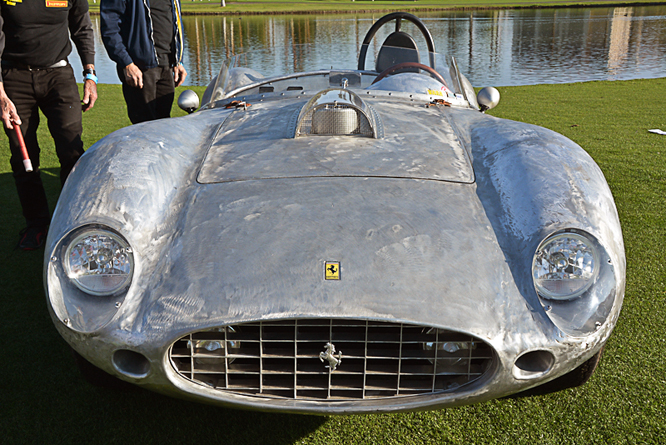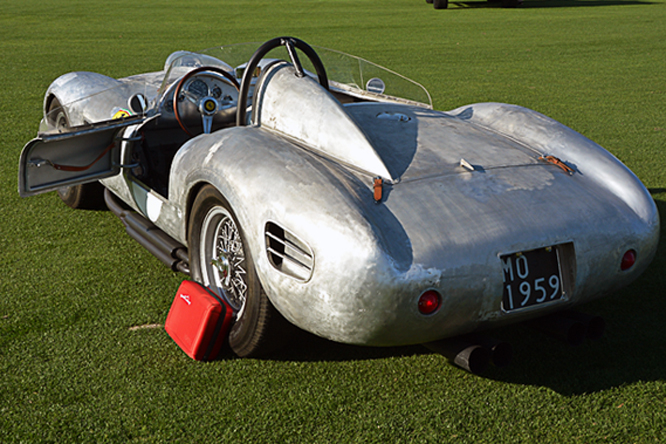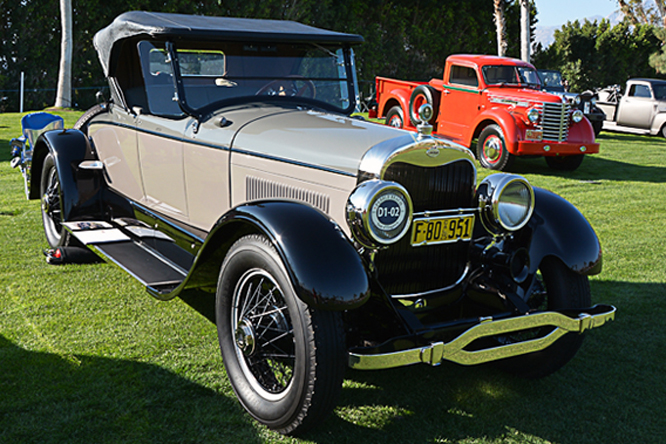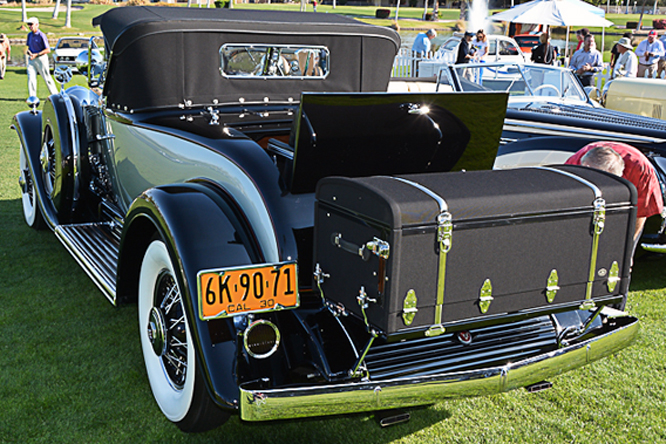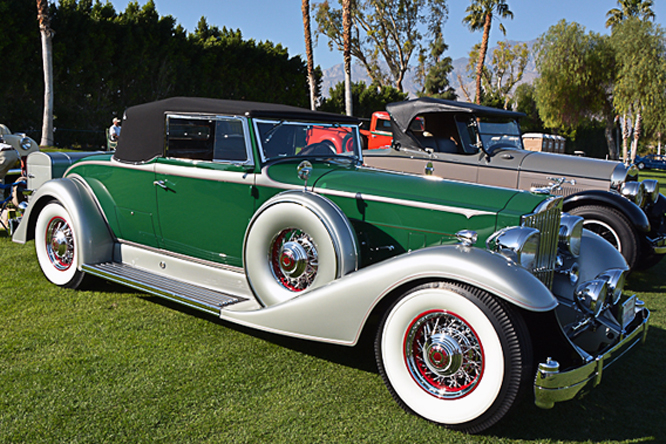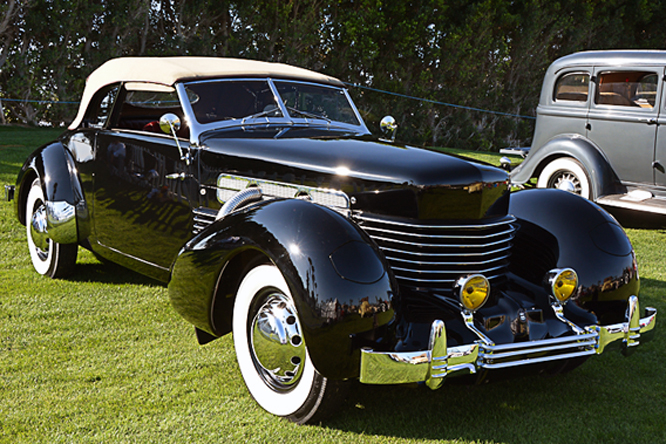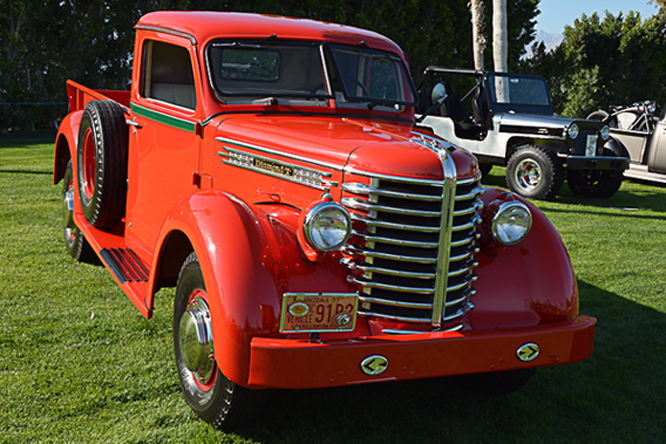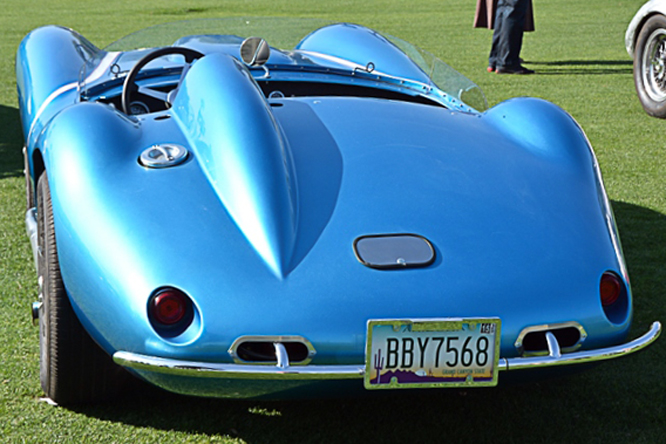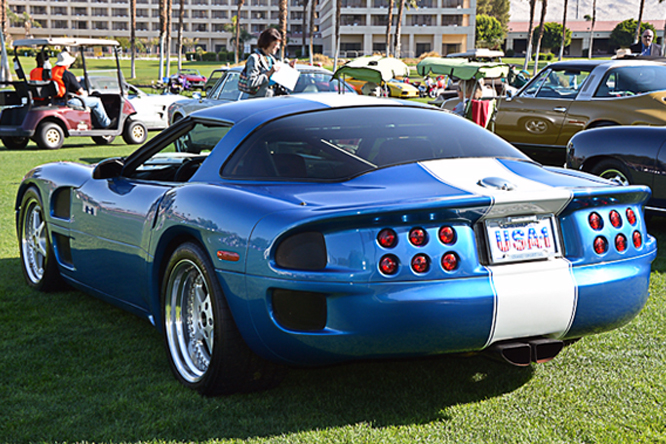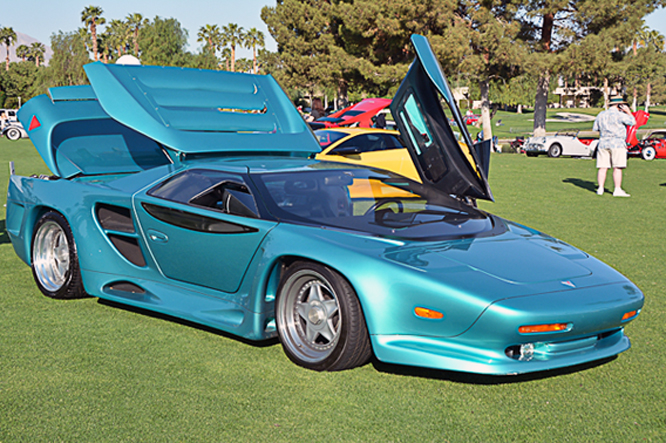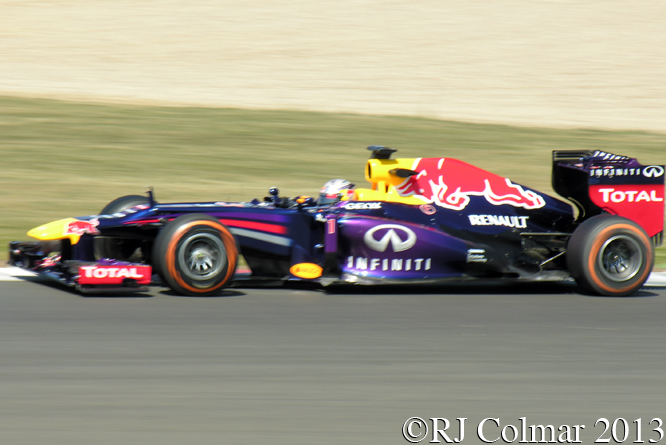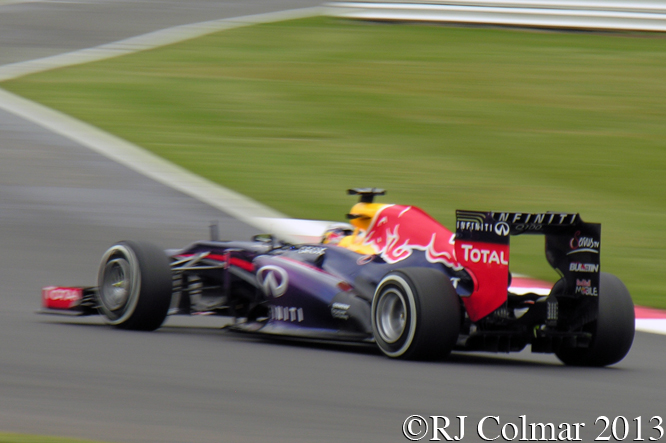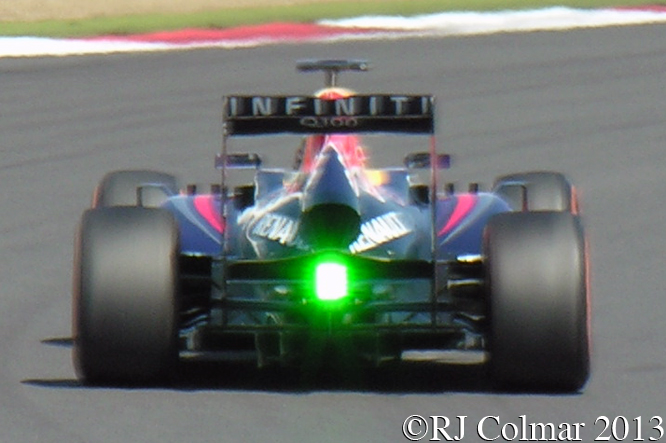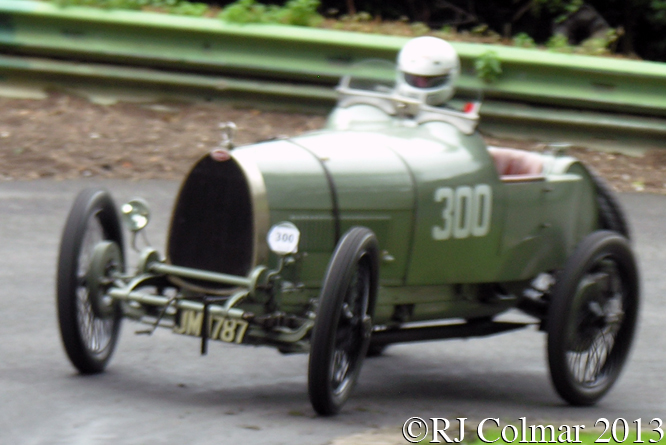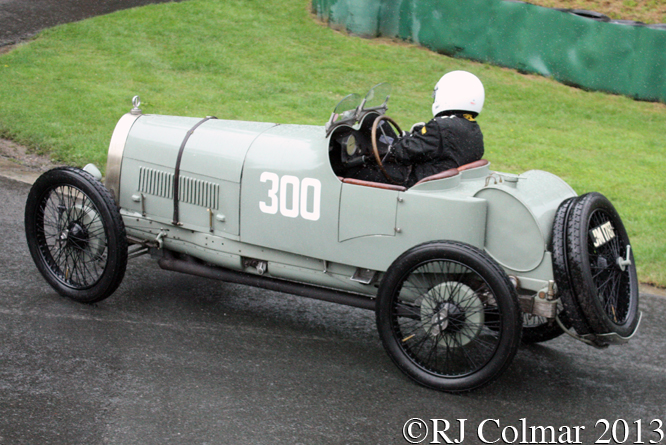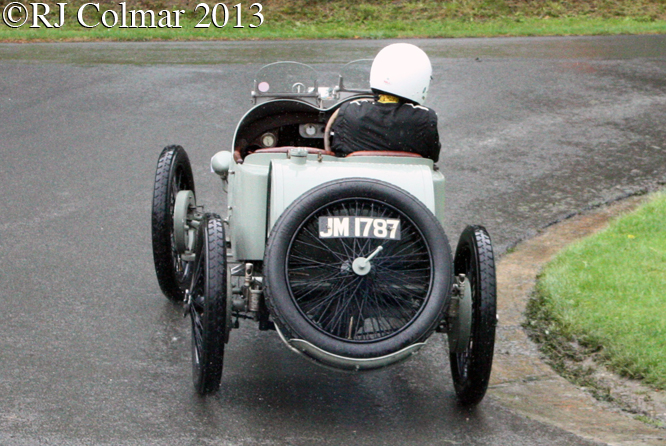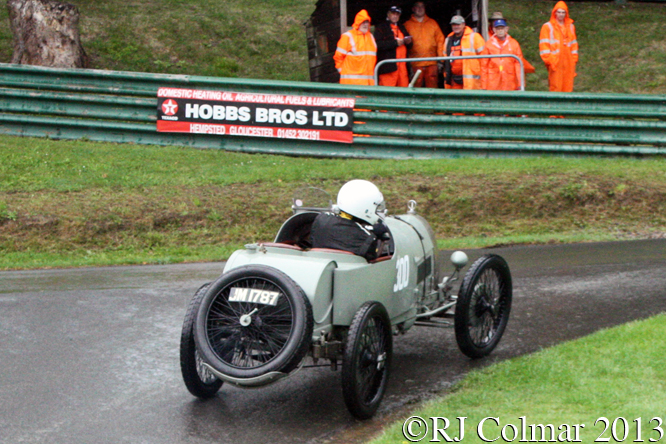For the 1957 season Maserati manufactured 3 lightweight versions of the 250F to keep pace with the Lancia Ferrari D50’s which Juan Manuel Fangio drove to his fourth World Drivers Championship title in 1956.
Third of the three T2’s was chassis #2529 which was shared during 1957 between Stirling Moss, Harry Schell and the returning ‘Old Man’ Fangio who despite his success was not overly enamoured by his time at Maranello.
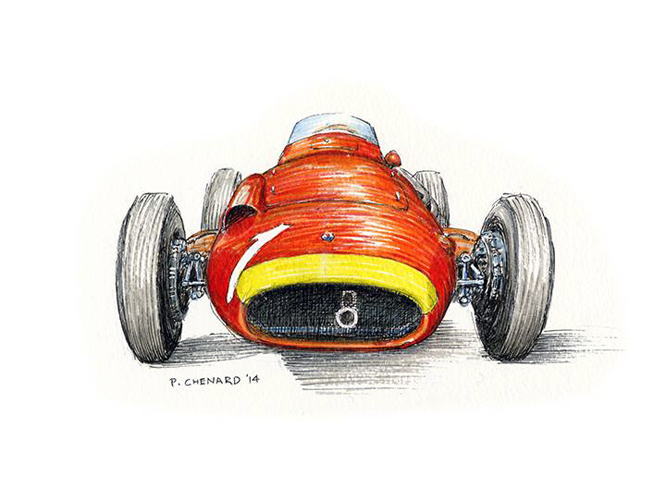
Pen&ink and markers on watercolour paper 9″x 7″ © Paul Chenard 2014
Fangio won the opening two championship races of the 1957 season at home in Argentina and in Monaco, the third race of the Championship season was the Indy 500 for which only Giuseppe Farina of the regular World Drivers Championship contenders was entered.
Farina did not start the ’57 Indy 500 which was won by Sam Hanks in the Epperly Special. Fangio then drove today’s featured 250F T2 chassis #2529 to victory in the 1957 French Grand Prix.
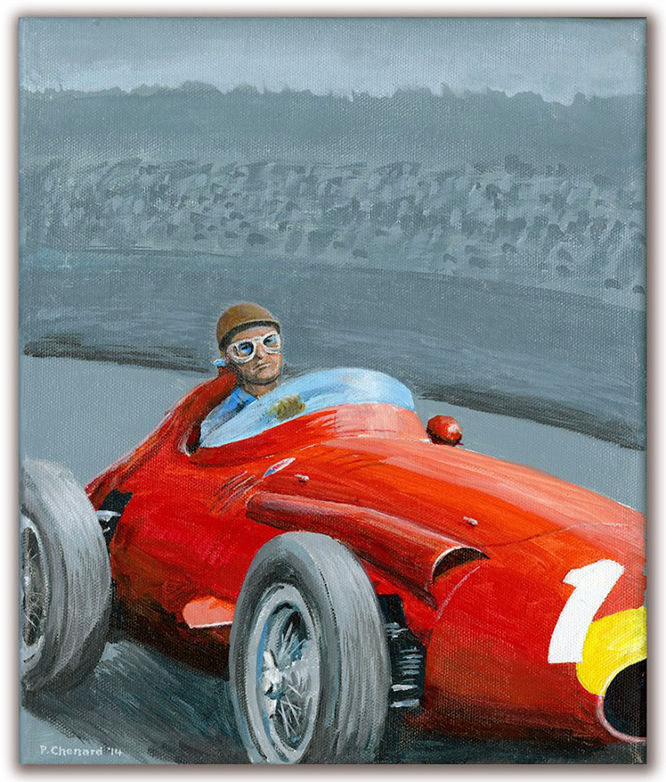
Acrylic on canvas 10″x 12″ © Paul Chenard 2014
At the British Grand Prix Fangio retired #2529 with an engine problem leaving Tony Brooks and Stirling Moss to share the first championship Grand Prix victory for Vanwall.
Fangio qualified #2529 on pole, with a time 16 seconds faster than he had driving a Lancia Ferrari 1956, for the 1957 German Grand Prix alongside him Mike Hawthorn qualified 2nd in his Lancia Ferrari with the lightweight 250F T2 of Jean Behra and Lancia Ferrari of Peter Collins filling out the front row of the grid.
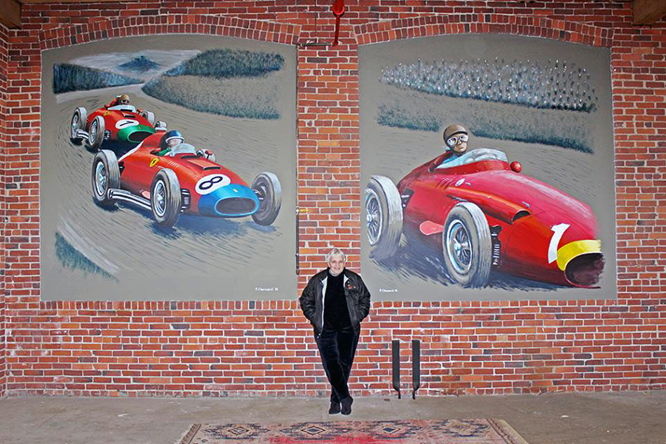
1957 German Grand Prix Mural @ 9′ x 18′ © Paul Chenard 2014, with Denise McCluggage at European Motorsports, Lawrence, MA
On a hot day at the Nurburgring on August 4th 1957 the Ferrari’s of Hawthorn and Collins set off into an immediate lead of the 311 mile German Grand Prix, but by lap 3 Fangio had passed both and unbeknown to the Englishmen sailed off into the distance in order to make a large enough lead to enable him to make a scheduled pit stop, having started the race like Behra in fourth on half empty tanks.
During his pit stop Behra lost time when he broke his filler cap off while climbing back into the car. Fangio was even less fortunate spending 54 seconds in the pits after a mechanic had lost a wheel nut. Fangio rejoined the race in third place 48 seconds behind the battling Howthorn and Collins.
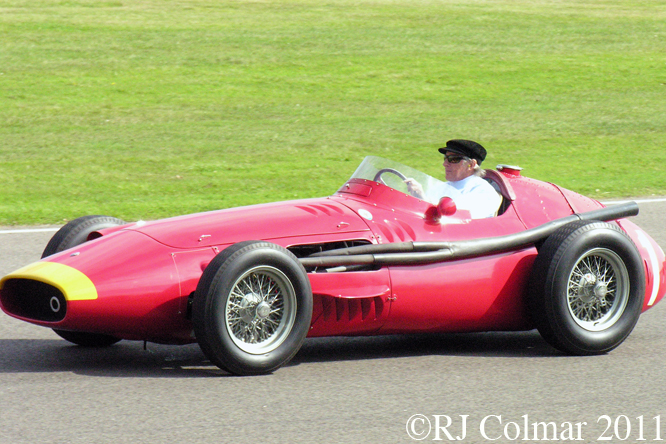
Over the next 10 laps Fangio broke the Nurburgring lap record nine times seven times in succession passing Hawthorn for the lead on the penultimate lap with two wheels on the grass to record possibly the greatest Grand Prix victory ever, enough to secure “El Maestro” his fifth and final World Championship Victory.
Fangio noted after the race “I have never driven that quickly before in my life and I don’t think I will ever be able to do it again”, and later admitted “Nürburgring was my favourite track. I fell totally in love with it and I believe that on that day in 1957 I finally managed to master it. It was as if I had screwed all the secrets out of it and got to know it once and for all. . . For two days I couldn’t sleep, still making those leaps in the dark on those curves where I had never before had the courage to push things so far.”
As it turned out Fangio would not win any more championship Grand Prix races before retiring mid way through 1958, meaning the car #2529, seen driven by Sir Jackie Stewart at Goodwood Revival above, was the won in which possibly the greatest driver of all time won his last two Grand Prix victories.
Unusually unlike many of the other Maserati 250F’s it’s number was never used on any other chassis nor did it ever carry any other chassis number. Fangio drive #2529 to second place finishes championship races at Pescara and Monza with Harry Schell taking the car over for the GP Modena where he finished 3rd.
Fangio drove the car to 4th with fastest lap in the non championship 1957 GP du Maroc and 4th in the opening round of the 1958 Championship in Argentina. The car was then sold on to Scuderia Sudamericana who entered #2529 for Giorgio Scarlatti and Jo Bonnier who achieved little by way of success apart from a win for Bonnier in a non championship Formula Libre race at Watkins Glen.
Scuderia Ugolini entered the #2529 again for Giorgio Scarlatti in 1959 it’s final championship appearance being in the 1960 Argentinian Grand Prix from which Scarlatti retired with overheating issues.
After spending time in the Briggs Cunningham museum #2529 was bought by Hartmut Ibing in 1988 in a silent auction.
I did not realise it at the time I took the photograph but having Sir Jackie Stewart drive Fangio’s ’57 German Grand Prix winning car at Goodwood was particularly pertinent because Sir Jackie also took a famous win at the Nurburgring, but this time in the rain in the German Grand Prix of 1968.
My thanks to Paul Chenard for kindly allowing me to use reproductions of his artwork in today’s post.
Thanks for joining me on this “Ringmeister” edition of “Gettin’ a li’l psycho on tyres” I hope you will join me again tomorrow when for a look at a Bugatti. Don’t forget to come back now !
PS in a fitting tribute to David McKinney who wrote the definitive “Maserati 250F” last weeks featured 250F #2522/16/23/26 now owned by Graham Adelman was present at Davids funeral last week. My thanks to Tim Murray for forwarding this information.


